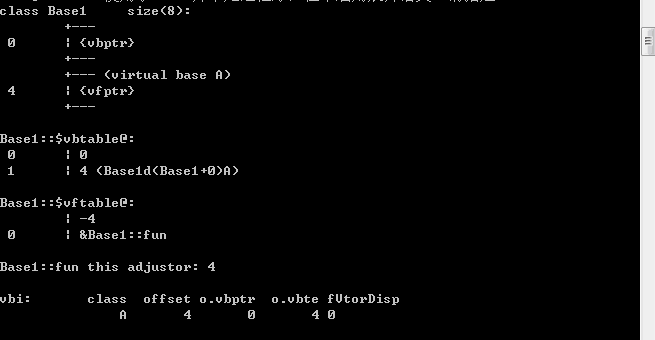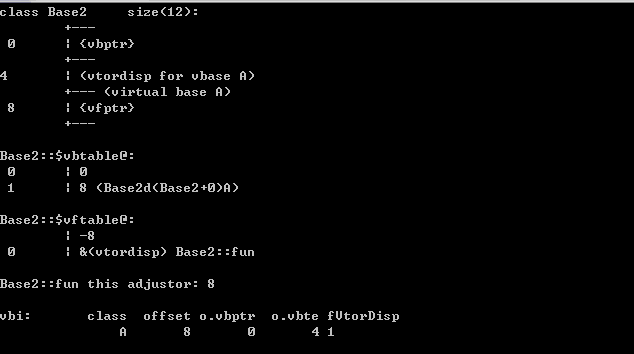今天在复习虚函数的时候,看到很多博客上写虚继承的子类时,没有添加构造函数,所以sizeof相对基类多了4
于是自己在写的时候添加了构造函数,却发现字节多了8
代码:
class A{
public:
A(){};
~A(){};
virtual void fun(){};
};
class Base1 : public virtual A{
public :
virtual void fun(){};
};
class Base2 : public virtual A{
public:
Base2(){};
~Base2(){};
virtual void fun(){};
};
int main()
{
cout << sizeof(Base1) << endl;// 8
cout << sizeof(Base2) << endl;// 12
return 0;
}
内存布局如下
可以发现Base2多了一个vtordisp域,
关于vtordisp域中MSDN的解释:虚拟继承中派生类重写了基类的虚函数,并且在构造函数或者析构函数中使用指向基类的指针调用了该函数,编译器会为虚基类添加vtordisp域。
在经过测试之后,只有在重写虚函数并且存在显式的构造函数情况下,就会生成vtordisp域
并且在文档写到
Specifying 1 or on, the default, enables the hidden vtordisp members where they are necessary.
Specifying 2 enables the hidden vtordisp members for all virtual bases with virtual functions. vtordisp(2) might be necessary to ensure correct performance of dynamic_cast on a partially-constructed object.
所以vtordisp域是可以不生成的 在预处理中 #pragma vtordisp(on/off)
那么vtordisp是干什么的?
关于vtordisp的作用 在网上找到了这样一段话
In the virtual inheritance case, the vtordisp value is not stored in the __virtual_inheritance pointer! Instead, the compiler hard-codes it into the assembly output when the function is invoked. But to deal with incomplete types, you need to know it.
所以我的理解是vtordisp的作用就是处理虚继承时虚指针里出现不完整类型的情况(如有错误请指出)























 2655
2655

 被折叠的 条评论
为什么被折叠?
被折叠的 条评论
为什么被折叠?








